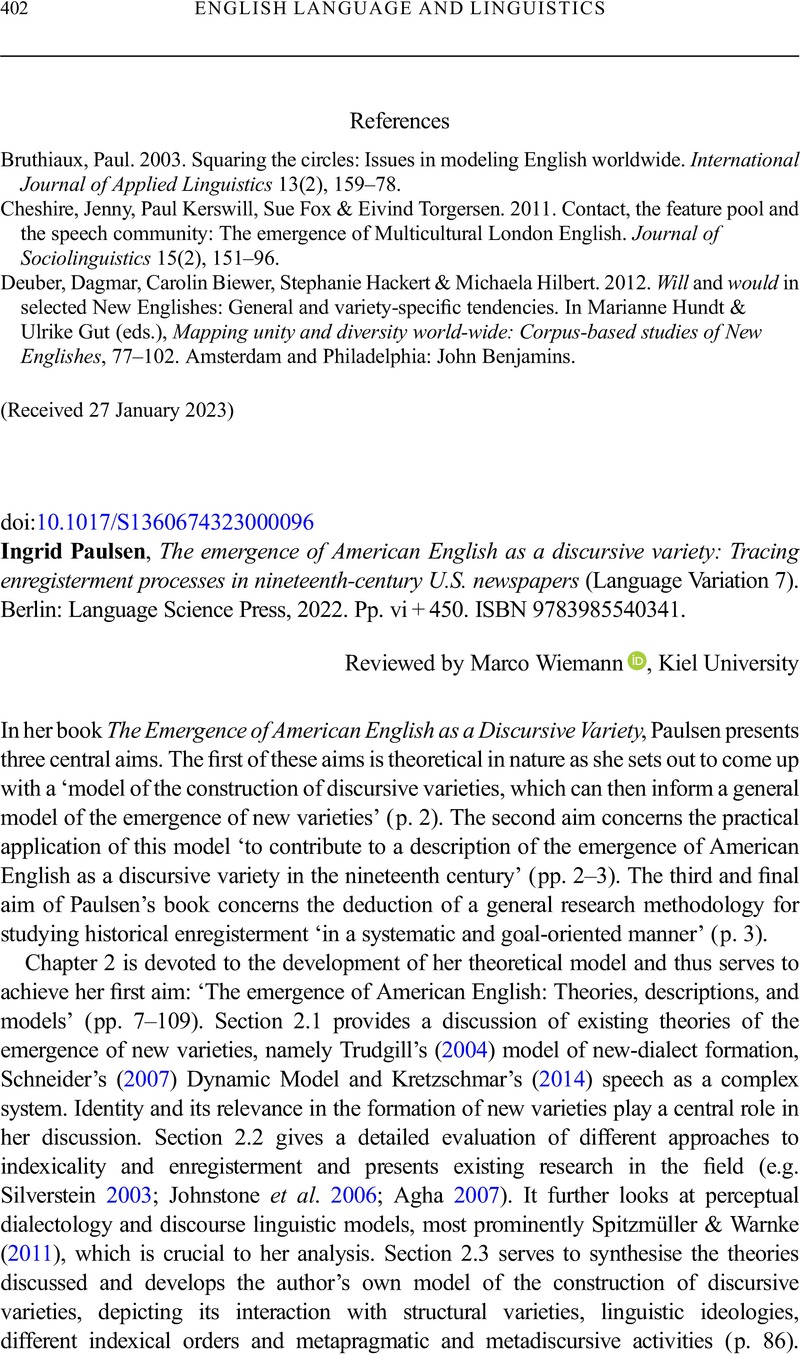Crossref Citations
This article has been cited by the following publications. This list is generated based on data provided by Crossref.
Przemyslaw, Kanecki
2024.
Americanisation: The deterioration of British English.
Salud, Ciencia y Tecnología - Serie de Conferencias,
Vol. 3,
Issue. ,
p.
1090.




